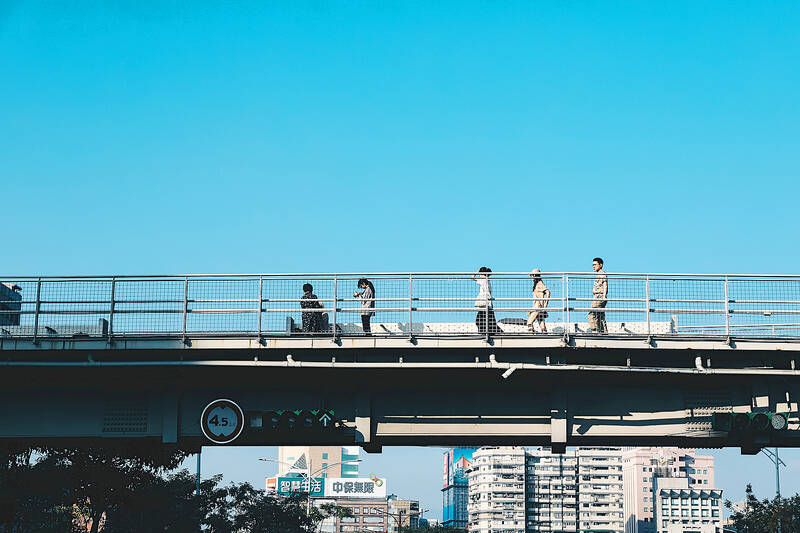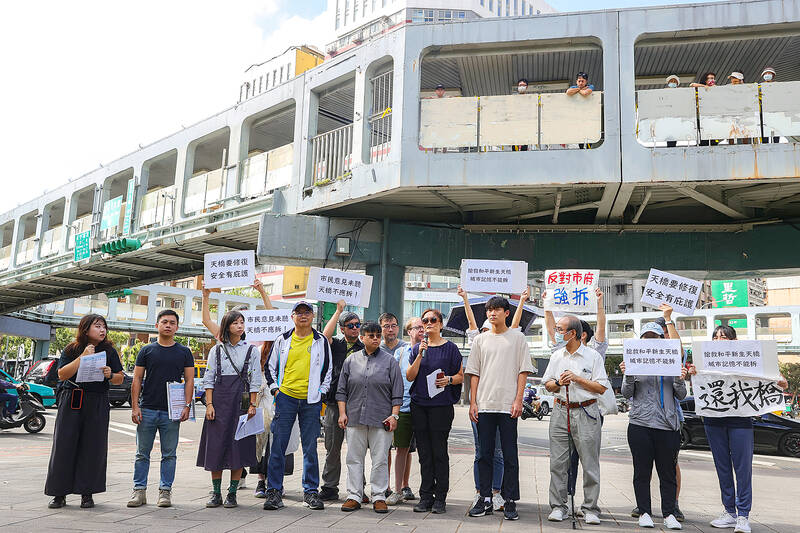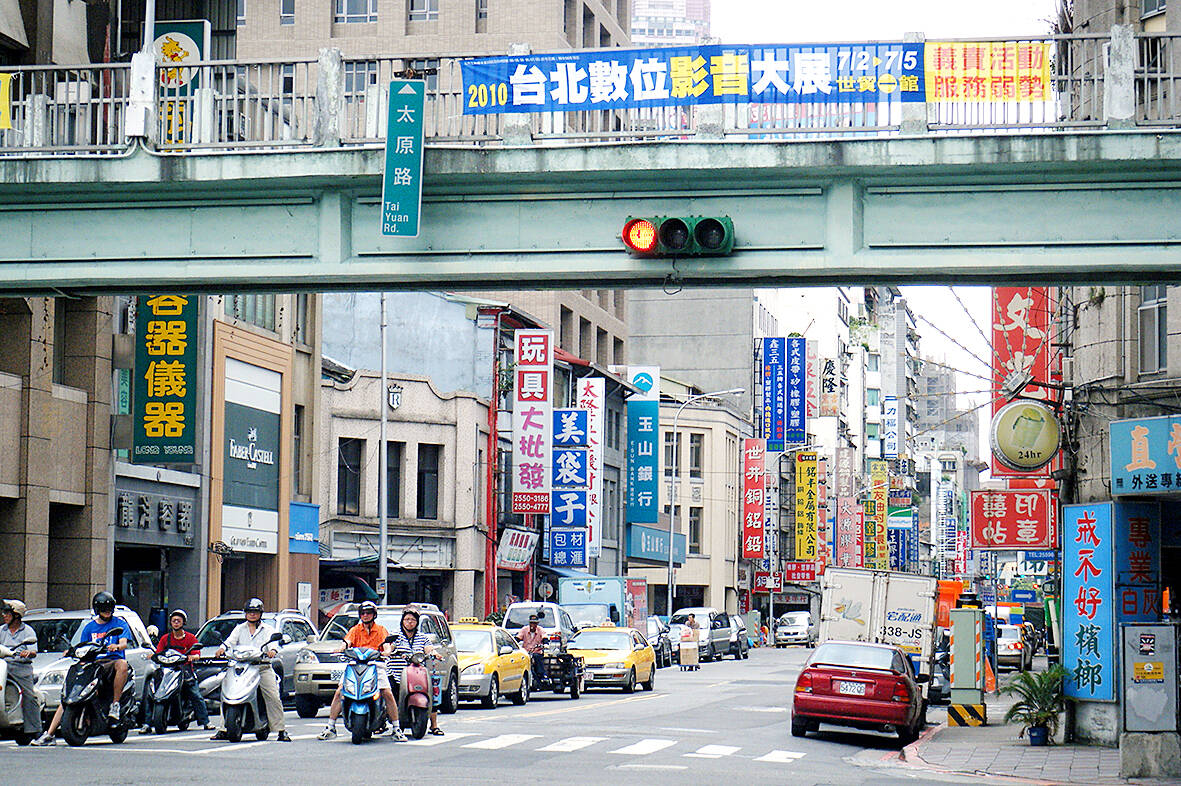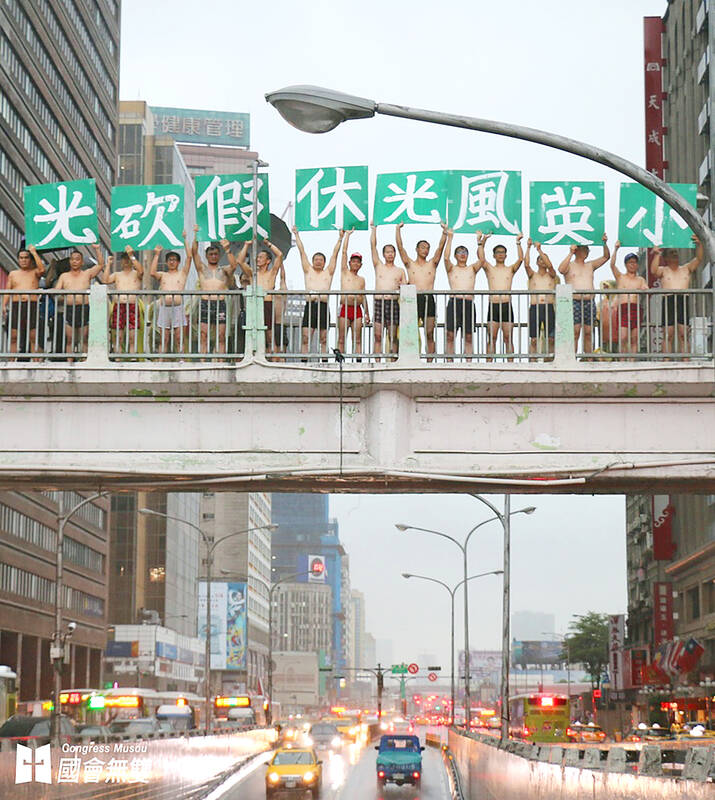Nov. 11 to Nov. 17
People may call Taipei a “living hell for pedestrians,” but back in the 1960s and 1970s, citizens were even discouraged from crossing major roads on foot. And there weren’t crosswalks or pedestrian signals at busy intersections.
A 1978 editorial in the China Times (中國時報) reflected the government’s car-centric attitude: “Pedestrians too often risk their lives to compete with vehicles over road use instead of using an overpass. If they get hit by a car, who can they blame?”

Photo courtesy of weichen_kh vis Flickr
Taipei’s car traffic was growing exponentially during the 1960s, and along with it the frequency of accidents. The policy was to prioritize the efficiency of motorized vehicles, which meant getting pedestrians off the roads. In 1965, the city built its first pedestrian underpass next to the old Taipei Zoo in Yuanshan, which burrowed across the busy Zhongshan North Road. Three years later in March 1968, the first overpass, or “sky bridge” (天橋) appeared across today’s Zhongxiao West Road by the North Gate.
These structures multiplied across the city, many of them around schools, at one point numbering more than 110. They weren’t just passageways, but an integral part of the urban landscape that left a lasting imprint on those who used them daily. Vendors hawked their wares there, and salespeople used them to approach passersby. Beggars were also common. At a time when Taipei didn’t have many tall buildings, they served as vantage points to watch the sunset or snap photos, protesters hung banners on them and they also appeared in countless novels, movies and music videos. In later years they were also touted as exhibition and performance spaces.
With the shift toward humanistic traffic planning in the 2000s, coupled with the deterioration in appearance and structure of many of the overpasses, the city began tearing them down. So far, 41 have been removed.

Photo: CNA
Even though people no longer used them, they still often protested the demolitions due to the special place the bridges had in their memories. Over the past week, residents have rallied against the Taipei City Government’s plan to destroy the 42-year-old Xinsheng Heping overpass by Daan Forest Park, which was scheduled to begin on Nov. 4. Although work has been delayed, at the time of writing the city seems intent on pushing through, noting that the usage rate of the structure is only at around 10 percent.
CHARITABLE ACT
On Dec. 9, 1968, just nine months after the first sky bridge came up, students at Yongle (永樂) and Taiping (太平) elementary schools cheered loudly as the mayor inaugurated the Pingle overpass (平樂陸橋) at Yanping N Road and Liangzhou Street. Yanping was one of Taipei’s busiest streets then, and finally the children had a safe way to cross it. Today, it’s Taipei’s oldest surviving sky bridge.

Photo: CNA
The VIP of the ceremony was Yu Chun-cheng (游俊成), a neighborhood resident who donated NT$400,000 (about NT$3 million today) to build the bridge, amounting to two-thirds of the total costs.
A United Daily News (聯合報) report states that Yu had witnessed a tragic traffic accident three years earlier and vowed to save up to do something that would help pedestrians. He provided blueprints to the city and specified the location, noting that the intersection was like the “mouth of a tiger” to the area’s numerous students.
After this, a good portion of Taipei’s overpasses were built near schools for student use; sometimes schools even paid for their construction.

Photo courtesy of Wikimedia Commons
It was a rapid transition; just a decade earlier Taipei’s street traffic mostly consisted of pedestrians, bicycles, pedicabs and oxcarts. The government began phasing out pedicabs during the early 1960s and encouraged drivers to switch to taxis, and the number of motorized vehicles multiplied from then.
At this time, Taipei entered a “road building frenzy,” writes Hsiao Yao-chi (蕭珧綺) in “Passage, Vision and Place: The Production and Construction of Pedestrian Bridges in Taipei” (通道,觀視與地方:台北市天橋的生產與建構). But without much of a comprehensive plan, the city’s traffic quality plummeted and accidents soared. Their solution was to keep human and vehicle traffic separate.
“As overpasses have been completed in the busy areas of the city, it’s reasonable for the police to hope that people will use them … Humans are at a disadvantage when competing against cars, and face serious safety concerns. With the overpasses, now people will walk above, cars will pass below and everybody wins,” a July 1968 Central Daily News (中央日報) editorial stated.

Photo courtesy of Wikimedia Commons
PEDESTRIANS FIRST
Most of Taipei’s overpasses were built between 1970 and 1982, and the practice soon spread to other cities, Hsiao writes. But the traffic situation continued to worsen.
The city had to do something about it; they began planning the MRT system and moving the railroad underground. In 1990, the city designated bus-only lanes to increase their efficiency so that more people would use public transport. This inadvertently reduced the use of overpasses as people had to go to the middle of the road to catch the bus.
In 1997, the city released its first traffic plan that put pedestrians first under then-department of transportation director Hochen Tan (賀陳旦). He limited the permits for new overpasses and underpasses, and established crosswalks and added pedestrian signals at major intersections. The city also began clearing up the sidewalks and cracked down on those who blocked them. With these measures, overpass use declined.
It didn’t help that these structures were not well-maintained; the anti-slip treads of the stone stairs wore out to the point that they became hazards — a 1989 United Daily News article even called the steps “murder weapons.” People criticized them for being unfriendly to disabled people or elderly — a few elevators were built but the city soon realized it was not worth the cost. Politicians argued that they were costly to maintain.
During the late 1990s, the city attempted to repurpose the bridges into cultural spaces, Hsiao writes, and then-mayor Chen Shui-bian (陳水扁) in 1998 expressed his hope that they could become “open-air museums and concert halls.” But that wasn’t enough to save them.
The first overpasses to be removed were for practical purposes, either due to the railroad moving underground or MRT construction. No more were built after 2008, and in 2016 the city began tearing them down in earnest.
Taiwan in Time, a column about Taiwan’s history that is published every Sunday, spotlights important or interesting events around the nation that either have anniversaries this week or are tied to current events.

Most heroes are remembered for the battles they fought. Taiwan’s Black Bat Squadron is remembered for flying into Chinese airspace 838 times between 1953 and 1967, and for the 148 men whose sacrifice bought the intelligence that kept Taiwan secure. Two-thirds of the squadron died carrying out missions most people wouldn’t learn about for another 40 years. The squadron lost 15 aircraft and 148 crew members over those 14 years, making it the deadliest unit in Taiwan’s military history by casualty rate. They flew at night, often at low altitudes, straight into some of the most heavily defended airspace in Asia.

Beijing’s ironic, abusive tantrums aimed at Japan since Japanese Prime Minister Sanae Takaichi publicly stated that a Taiwan contingency would be an existential crisis for Japan, have revealed for all the world to see that the People’s Republic of China (PRC) lusts after Okinawa. We all owe Takaichi a debt of thanks for getting the PRC to make that public. The PRC and its netizens, taking their cue from the Chinese Communist Party (CCP), are presenting Okinawa by mirroring the claims about Taiwan. Official PRC propaganda organs began to wax lyrical about Okinawa’s “unsettled status” beginning last month. A Global

Taiwan’s democracy is at risk. Be very alarmed. This is not a drill. The current constitutional crisis progressed slowly, then suddenly. Political tensions, partisan hostility and emotions are all running high right when cool heads and calm negotiation are most needed. Oxford defines brinkmanship as: “The art or practice of pursuing a dangerous policy to the limits of safety before stopping, especially in politics.” It says the term comes from a quote from a 1956 Cold War interview with then-American Secretary of State John Foster Dulles, when he said: ‘The ability to get to the verge without getting into the war is

Like much in the world today, theater has experienced major disruptions over the six years since COVID-19. The pandemic, the war in Ukraine and social media have created a new normal of geopolitical and information uncertainty, and the performing arts are not immune to these effects. “Ten years ago people wanted to come to the theater to engage with important issues, but now the Internet allows them to engage with those issues powerfully and immediately,” said Faith Tan, programming director of the Esplanade in Singapore, speaking last week in Japan. “One reaction to unpredictability has been a renewed emphasis on